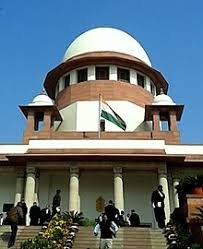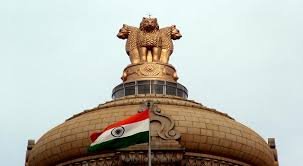The case involves M/s Suraj Impex (India) Pvt. Ltd., an exporter of Soyabean Meal (SBM), claiming entitlement to All-Industry Rate (AIR) duty drawbacks on its exports. A key point of contention was the applicability and retrospective effect of Customs Circular No. 35/2010-Cus. dated 17.09.2010. The Director General of Central Excise initially opined that exporters who had already availed rebate of central excise duty under Central Excise Rules, 2002, were not entitled to the AIR drawback. The Commissioner (Customs) Kandla subsequently denied the Appellant the benefit for periods prior to 17.09.2010, asserting that the Circular was not retrospective5. The High Court of Madhya Pradesh dismissed the Appellant’s writ petition and review petition, upholding the prospective application of the Circular from 20.09.2010 and disallowing a claim of over Rs. 11 crores….
Law Involved The core legal frameworks include:
- Customs Tariff Act, 1975.
- Central Excise Rules, 2002, specifically Rule 18 and Rule 19(2), which govern the rebate of central excise duty….
- Various Customs Notifications (e.g., 81/2006, 68/2007, 103/2008, 84/2010) that introduced and governed AIR duty drawbacks….
- Customs Circular No. 35/2010-Cus. dated 17.09.2010, which was the central piece of legislation under dispute….
- Principles of statutory interpretation, including contemporanea exposito (contemporary exposition) and the doctrine of “fairness” in beneficial legislation.
Reasoning:
The Supreme Court determined that Customs Circular No. 35/2010-Cus. was clarificatory and benevolent in nature, not a substantive modification. The Circular’s language did not expand or alter the scope of prior notifications but rather clarified that manufacturers could receive the customs component of the AIR drawback even if they had already availed the rebate of central excise duty. The Court noted that the benefit of 1% customs duty drawback was inherently available to SBM merchant exporters since 2007, irrespective of whether CENVAT facility had been availed. The use of the word “should” in previous notifications was interpreted as declaratory, meaning the benefit “shall be deemed always to have meant” what the Circular clarified. The principle of contemporanea exposito supported the retrospective interpretation of a clarificatory circular, as it merely clarifies existing law rather than creating new rights or burdens. The Court found the High Court’s view of prospective operation to be “cursory” and based on a misappreciation of the CBEC Circular’s rationale. A beneficial legislation should generally apply uniformly and retrospectively, unless it imposes an undue burden.
Holding:
The Supreme Court allowed the appeal, setting aside the judgment and order of the High Court of Madhya Pradesh dated 17.11.2014 and the subsequent dismissal of the review petition. The Court held that the Appellant is entitled to the benefit of 1% AIR Customs Duty Drawback on the export of SBM. This entitlement applies retrospectively from the year 2008, given the clarificatory and benevolent nature of Customs Circular No. 35/2010-Cus. dated 17.09.2010, which operates with retrospective effect.
M/S Suraj Impex (India) Pvt. Ltd V. Union Of India And Others
Supreme Court: 2025 INSC 755: (DoJ 22-05-2025)







